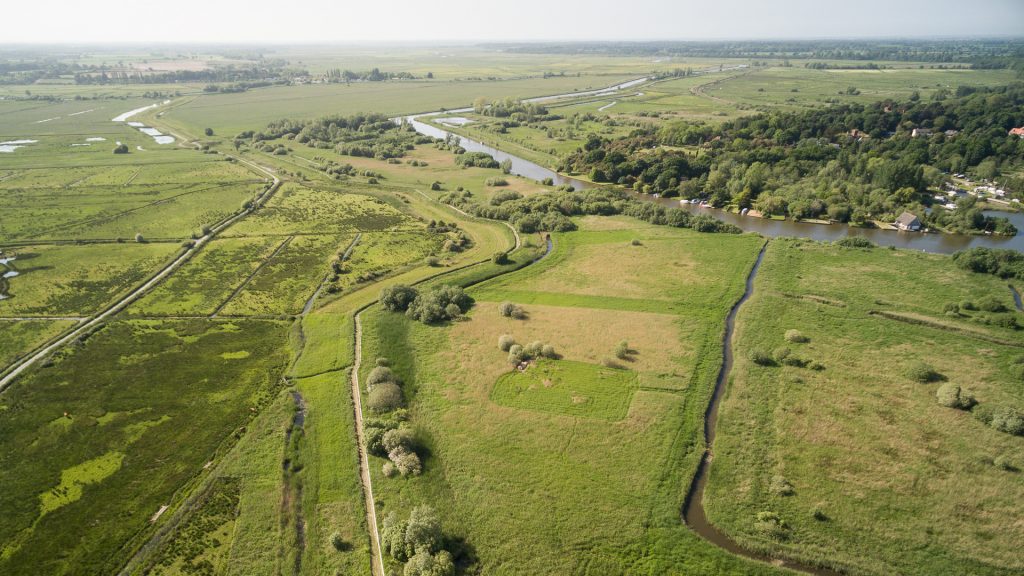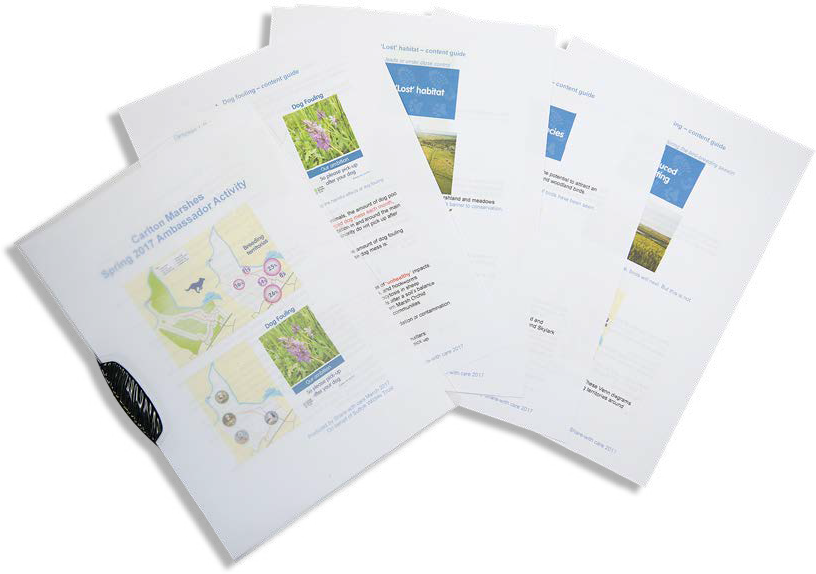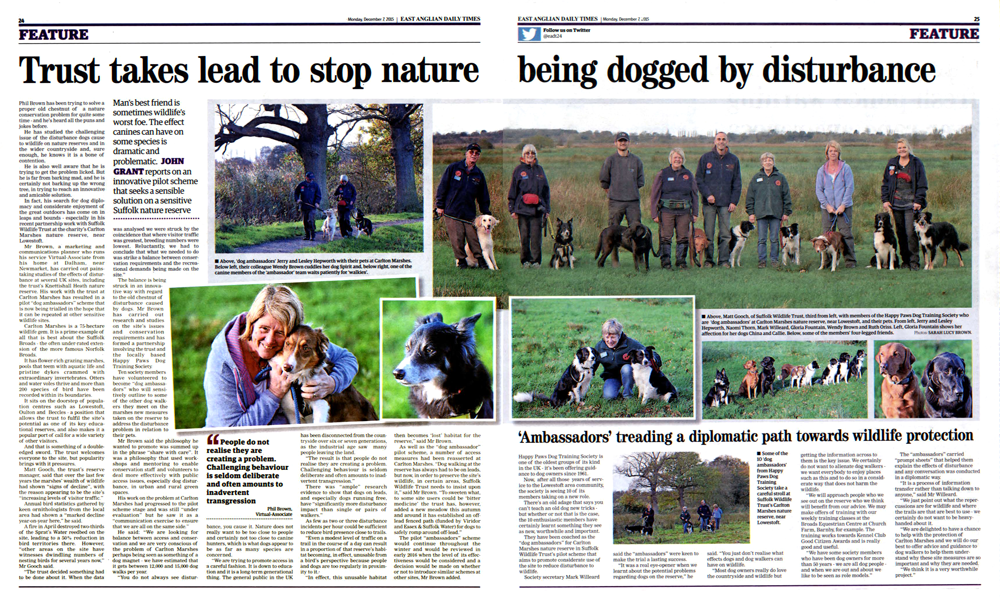2014-18
Suffolk Wildlife Trust, controlling dogs at Carlton Marshes
Dog disturbance reduced and fouling halved, despite increased dog traffic

Background
This 1000-acre nature reserve, comprising a mix of reed beds and grazing marshes, is on the southern edge of the Broads and borders Lowestoft. Across the whole site dogs were regarded as a problem and anti-social behaviour was periodically an issue too.
With it having doubled in size the reserve was expected to become a ‘dog magnet’, thereby exacerbating the current disturbance issues. To forestall this, site management decided effort should be dedicated to try to resolve the issue as soon as possible.
Project
 The scheme began in 2014 with the contacting of a local dog club (Lowestoft’s Happy Paws Dog Training Society) to enlist its members as dog ambassadors. Their role was to represent the reserve, assist Suffolk Wildlife Trust management in patrolling the site and help with resolving persistent dog owner/dog disturbance issues.
The scheme began in 2014 with the contacting of a local dog club (Lowestoft’s Happy Paws Dog Training Society) to enlist its members as dog ambassadors. Their role was to represent the reserve, assist Suffolk Wildlife Trust management in patrolling the site and help with resolving persistent dog owner/dog disturbance issues.
A total of a dozen ambassadors was initially recruited and trained using workshops. These ambassadors were supplied with prompt materials allowing them to tell a series of persuasive and compelling stories to the public. A proactive programme of social media also supported these ambassadors and provided another meaningful dialogue opportunity with site users.
The full scheme got underway in 2016 and was featured on Countryfile on 14th May 2017. Also during spring 2017, a Public Space Protection Order (PSPO) was enacted at the site and its threat of fines being administered served as a valuable ‘stick’, helping to encourage considerate behaviour.
Outcome
By spring 2018, with two years of logged records, the scheme was demonstrably successful with both dog disturbance and fouling reduced. The enactment of the PSPO had also contributed, but the ambassadors’ dialogues with the public proved pivotal, providing important positive PR to bolster the reserve’s image.
Over the two complete years of activity, year-on-year, the project’s data shows the following had been achieved:
- Visitor numbers had increased by 25%
- Dog numbers had risen by 20%
- Dog fouling was down by 51%
- The numbers of dog walkers needing to be spoken to was down by 35%
- While dog related incidents were reduced by 25%
- Plus there was a bird bonus’ of 25% more bird territories recorded
